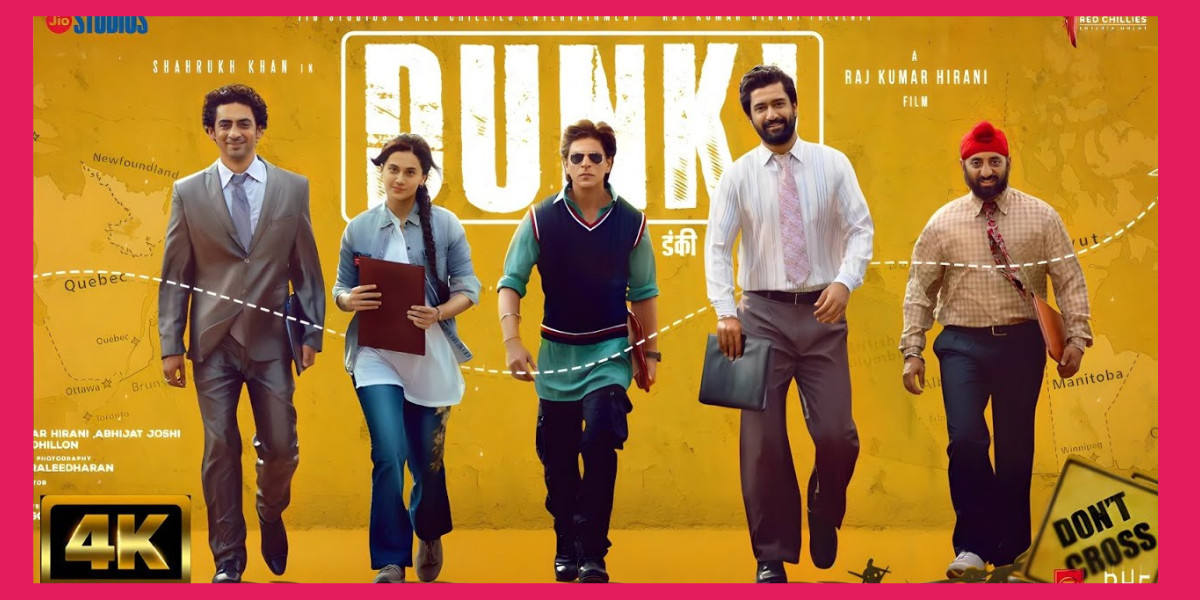
This year, Bollywood has achieved a financial return deserving of one of its customary “singing on top of the hills” moments.
After a pandemic-induced slump, public frustration with huge studio films and Bollywood megastars, and streaming services taking away a significant portion of viewership, India’s Hindi language film industry made an amazing comeback.
2023 was one of the highest-grossing years ever, with a total box office receipt of $1.3 billion, according to consulting firm Ormax Media.
Fears that Mumbai’s glittering dream factory was losing its sheen have dispelled thanks to the huge commercial success of big-ticket Bollywood films, which have brought back both mainstream and niche Indian moviegoers to the theatres.
India, which is among the world’s top makers of films, releases around 1,500 films annually, a testament to the diversity of its storytelling traditions.
This year’s selection of films was a mishmash of artistic delights. Some depicted the iconic Bollywood extravaganzas, while others featured high-profile actors in thrilling spy thrillers. Numerous featured elegantly choreographed romance songs shot in breathtaking locations, stylish special effects, and throbbing music that had moviegoers yelling and dancing.
Above all, the year belongs to Shah Rukh Khan, the adored superstar of India, whose son was acquitted of all charges after being imprisoned amid controversy in a drug case in 2021. Khan returned to a rapturous reception from his global fan base, as his films continued to do exceptionally well at the box office.
His first film of the year, “Pathaan,” brought in over $100 million globally, according per The Numbers website. Next was “Jawan,” which made about $136 million in revenue globally. And “Dunki,” the final one of the year, is another.
Khan recently shared a message on the social networking app X, formerly known as Twitter, saying, “Very grateful to all the people around the world who have given me soooo much love as an entertainer.”
“This year, Shah Rukh Khan has virtually single-handedly brought back the film industry, much like Tom Cruise did in Hollywood with his ‘Top Gun,'” Nikhil Taneja, co-founder of the youth-focused media company Yuvaa and host of the well-liked YouTube series “Be A Man, Yaar,” stated last year.
Other hits of the year include Salman Khan’s “Tiger 3,” the much criticised “Animal,” starring Ranbir Kapoor, and “Gadar 2,” starring Sunny Deol.
Additionally, Bollywood was overtaken by hyper-masculinity in that year, which was frequently cloaked in misogyny and militant nationalism.
Although angry young men have always been a common theme in Indian films, this year’s excessive, idealised screen violence raised the stakes. Nearly all of the 2023 Bollywood hits were violent and raging, with powerful male leads who displayed rippling muscles and blazing guns on screen as they proceeded on a bone-crunching rampage to defeat their foes.
Even the renowned “king of romance,” Shah Rukh Khan, embraced the blood and guts in his roles as a vigilante fighting against institutional abuses in “Jawan” and a spy taking on a terrorist cell in “Pathaan.”
The superhit film “Animal,” directed by Sandeep Reddy Vanga, received harsh criticism from reviewers for glorifying the poisonous masculinity and misogyny of its twisted leading character, despite Khan’s gentle machismo remaining caring and women-friendly even in his action pictures. The movie is headed for a $100 million run at global box offices, according to Bhadrakali Pictures, the producing company.
“The issue here, as always, is the manner of the portrayal, the script’s indulgence towards him, the humour and coolness written into his fictional character, and the various means used to give him an allure despite his violent ways,” wrote author and film critic Anna MM Vetticad in a blog post. “Violent men do exist in the real world and a violent man can certainly be the central character in a film.”
India is home to the greatest young population in the world, who also make up the bulk of moviegoers. It can be harmful to make dehumanising violence and casual misogyny aspirational in a nation where movie stars have cult-like followings and where movies both reflect and affect public behaviour, according to observers.
In 2022, the National Crime Records Bureau of the country recorded over 445,000 instances of crimes against women, indicating a 4% rise. More than 31% of these acts were classified as “Cruelty by Husband or Relatives,” according to the report.
Social critic Santosh Desai stated in the Times of India that “what we see today is the detachment of violence from emotional purpose” in the films. Given that upholding more traditional gender roles is politically quite comfortable, this strong declaration of masculinity could lead us back in time.
Co-founder of the Yuvaa organisation Taneja has been educating young Indians about “positive masculinity” through roadshows. He claimed that certain films “feed into every single bias” that an audience member may have, whether it is misogyny or a villain from a different faith.
“They can relate to what they witness in their households, where their fathers exhibit misogyny, when they watch such films. Towards their mothers, they exhibit patriarchy. They begin to believe a particular kind of gender imbalance that they witness,” he stated.
But according to Taneja, some of this year’s hit films showed a more accommodating, less aggressive masculinity.
The majority of critics praised Karan Johar’s “Rocky aur Rani kii Prem Kahaani,” or “Rocky and Rani’s love story,” for its gender politics and for dispelling misconceptions and biases against men. As per the Bollywood Hungama website, the film’s global box office earnings amount to around $45 million.
According to Taneja, the solution is to shift the conversation away from films that “aim to provoke only for the act of triggering” and towards those that support alternative interpretations of contemporary Indian masculinity. “We need to push them more and have more conversations about the alternates—positive, sympathetic, and sensitive masculinity.”

“Hello Everyone” Myself Joydip DN, and I Live in Sylhet And I am a Seasoned Digital Marketer, Accomplished Content Writer, Experienced Blogger And Combines A Wealth of Experience In Online Marketing Trained From Freelancer Lab Academy, With A Strong Linguistic Proficiency, Evident In My Impressive IELTS Band Score. Holding An, MBA With A Major In Management Information System(MIS) From Leading University. I Am(Joydip) Seamlessly Integrates Strategic Business Insights With Technological Acumen To Deliver Organic And Impactful And Results-Driven Content In The Dynamic Digital Landscape. Contact with me: debnathjoydip4@gmail.com”







